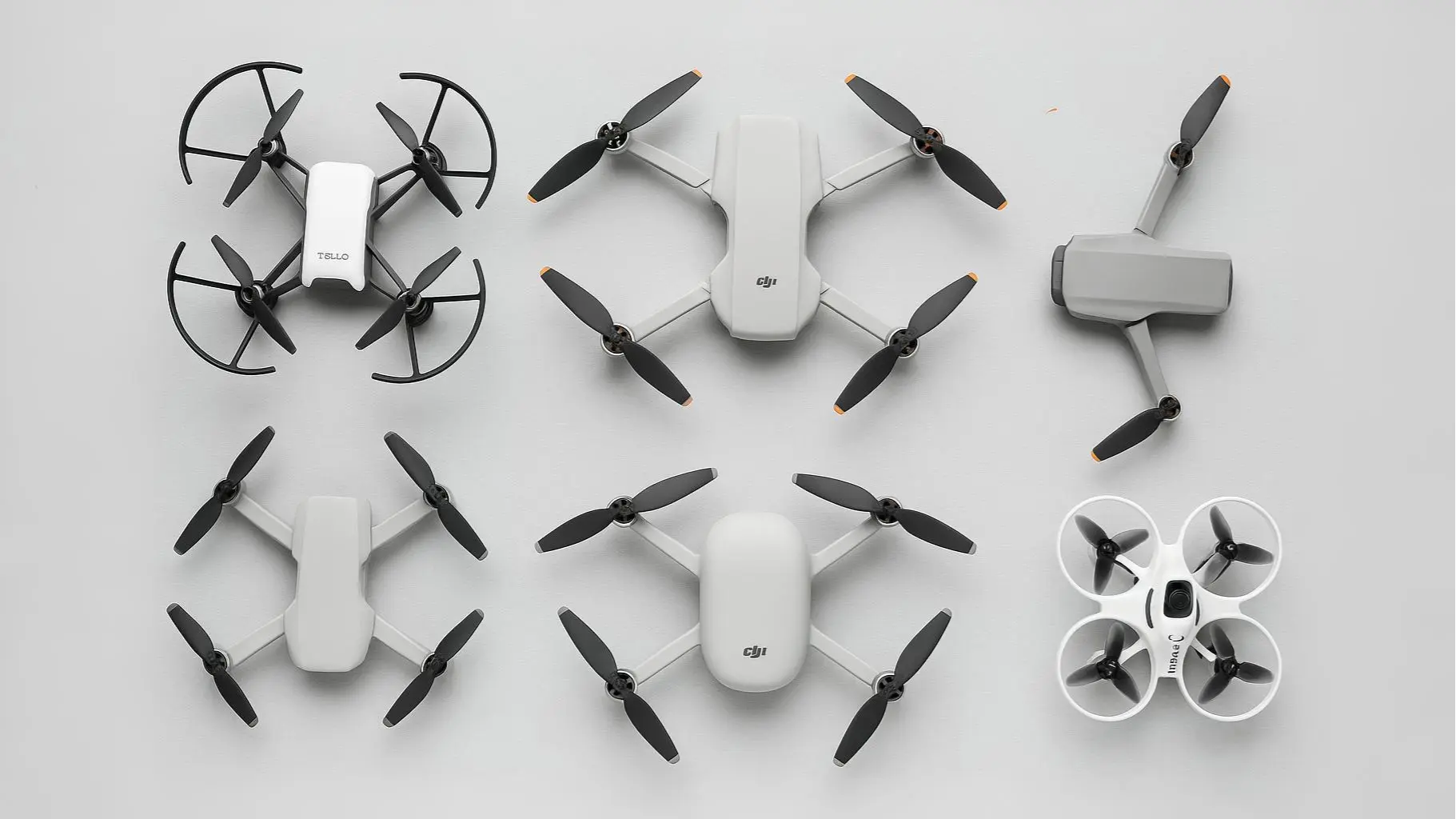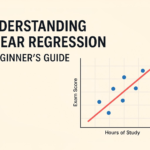Physical Address
304 North Cardinal St.
Dorchester Center, MA 02124

Discover the 6 best drones for beginners. Compare features, prices, and flight times to find the perfect drone to start your aerial journey.
Best drones for beginners combine user-friendly controls, stability features, and reasonable price points to help new pilots take to the skies with confidence. The perfect starter drone should forgive mistakes, offer helpful automation, and provide a gentle learning curve while still delivering an exciting flying experience.
Have you ever watched a drone glide through the air and thought, “I’d love to try that”? You’re not alone. But stepping into the drone world can feel overwhelming. With countless models featuring different specs and price points, knowing where to begin becomes its own challenge.
What draws you most to drone flying? Is it capturing stunning aerial photos? The thrill of flight itself? Or perhaps you’re looking for a new technological hobby to master? Your answer will help guide your selection process.
The good news is that drones have evolved from niche gadgets to accessible technology. Whether you’re documenting adventures, creating social media content, or simply experiencing the joy of flight, there’s a perfect beginner drone waiting for you.
In this guide, we’ll explore essential features every new pilot should consider, compare six beginner-friendly drones available in 2025, and provide practical tips to help you take flight with confidence. By the end, you’ll have the knowledge needed to make an informed decision and begin your aerial adventure.
Ready for takeoff? Let’s explore what makes a drone truly beginner-friendly.
Table of Contents
Toggle| Drone Model | Price (Approx.) | Key Features | Camera Quality | Flight Time | Pros | Cons |
|---|---|---|---|---|---|---|
| Ryze Tello | Under $100 | Simple controls, durable, auto takeoff/landing | 720p Video, 5MP Photo | ~13 mins | Very affordable, easy to learn | Limited wind resistance, short range |
| DJI Mini 3 | $400 - $500 | Lightweight (<249g), 4K camera, 3-axis gimbal | Up to 4K Video, 12MP | ~38 mins | Excellent image quality, portable | No obstacle avoidance |
| DJI Flip | $400 - $500 | Built-in prop guards, foldable, intuitive modes | Up to 4K Video, 12MP | ~31 mins | Durable, safe for beginners | Limited obstacle avoidance |
| Potensic Atom SE | $200 - $300 | Long flight time, lightweight, GPS, RTH | Up to 4K Video, 12MP | ~31 mins | Long battery life, good value | Limited obstacle avoidance |
| DJI Neo | Under $200 | Ultra-lightweight, palm takeoff/landing | Up to 4K Video, 12MP | ~18 mins | Very portable, easy to control | Short flight time, limited range |
| BetaFPV Cetus X Kit | $300 - $400 | Complete FPV kit, multiple flight modes | FPV Camera (Analog) | ~5 mins | Immersive FPV experience | Short battery life |
Before diving into specific models, let’s cover the essential features that make a drone suitable for beginners. Think of this as learning the rules of the road before getting behind the wheel.
For first-time pilots, stability is crucial. A drone that wobbles uncontrollably will quickly lead to frustration and crashes. Look for models with GPS, which helps maintain position even when you’re not actively making adjustments.
Intuitive controls are equally important. Many beginner-friendly drones offer simplified control schemes and dedicated beginner modes that limit speed and range while you’re learning. As one experienced drone pilot noted on DroneForum.com, it’s best to avoid “cheapo drones” that lack GPS, as they’re nearly impossible to hover steadily.
Durability matters too—accidents happen! Many beginner drones are built with materials that can withstand minor impacts, and some include propeller guards that protect both the drone and surrounding objects during those inevitable first bumps.
Flight time—how long a drone can stay airborne on a single charge—significantly impacts your learning experience. Longer flight times provide more opportunities to practice without constantly landing to recharge. Most beginner drones offer between 10-30 minutes of flight time.
For extended practice sessions, consider models available in “Fly More Combos” that include additional batteries. Keep in mind that First-Person View (FPV) drones typically have shorter flight times compared to standard GPS drones.
[Image suggestion: A beginner practicing with a drone in an open field]
Many beginners are drawn to drones for aerial photography and video. While professional-grade cameras aren’t typically found in entry-level models, most beginner drones can capture decent footage in 1080p or even 4K resolution.
Consider your primary goals: Is the drone mainly for learning flight basics, or is capturing aerial memories a priority? If photography matters to you, look for features like image stabilization through either a mechanical gimbal or electronic image stabilization (EIS).
Modern beginner drones often include safety features that reduce accident risk. Look for:
Propeller guards for physical protection during the learning phase
Now let’s look at specific models that consistently rank high for beginners, based on ease of use, safety features, and value.
The Ryze Tello offers an incredibly budget-friendly entry point into the drone world, typically priced under $100. This small, lightweight drone is controlled via a smartphone app and incorporates DJI flight technology for stable performance.
Despite its low price, the Tello includes helpful features like auto takeoff and landing, low battery protection, and a vision positioning system for precise hovering. Its camera captures 720p video and 5MP photos—not professional quality, but sufficient for learning aerial photography basics.
The main limitations are its modest wind resistance and shorter flight range. However, for learning fundamentals and having fun indoors or in calm conditions, the Ryze Tello is an excellent choice for absolute beginners.
According to DroneReviewHub.com, “The Tello remains the best value proposition for complete beginners who want to test the waters without significant investment.”
The DJI Mini 3 is perfect for beginners who prioritize image quality without a steep learning curve. Weighing under 249 grams, it often avoids stricter registration requirements in many regions.
This drone features a high-quality camera capable of recording 4K video and capturing 12MP photos, with the ability to rotate for vertical shooting—ideal for social media content. Its 3-axis gimbal ensures smooth, professional-looking footage.
While it lacks the obstacle avoidance sensors found in premium models, the Mini 3 offers intuitive controls, automated flight modes (“QuickShots”), and a reliable return-to-home function. With approximately 38 minutes of flight time, it gives beginners plenty of opportunity to practice and capture beautiful aerial content.
The DJI Flip features an innovative design specifically for beginners, emphasizing durability and ease of use. Its standout feature is full-coverage propeller guards made from lightweight carbon fiber, providing exceptional protection during flight.
This robust design makes it less susceptible to damage from accidental crashes—a common occurrence for new pilots. The Flip is also highly portable thanks to its compact, foldable design.
With automatic takeoff, intuitive flight modes, and a 4K camera, the Flip allows beginners to achieve professional-level results with relative ease. Its focus on safety makes it an excellent choice for those wanting worry-free flying and a gentle introduction to drone piloting.
For beginners who value extended time in the air, the Potensic Atom SE stands out with its impressive ~31-minute battery life. This lightweight, foldable drone typically falls under the 250-gram weight limit, simplifying regulations in many regions.
The Atom SE features a 4K camera with electronic image stabilization and a Sony sensor, delivering good quality images and videos at a mid-range price point. It includes intelligent flight modes and GPS-assisted features like return-to-home.
According to BestDroneGuides.com, “The Atom SE offers the best flight time-to-price ratio in the beginner segment, making it ideal for those who want maximum practice time without recharging.”
The DJI Neo is DJI’s most compact drone, specifically designed with beginners in mind. Weighing just 135 grams, it’s highly portable and often exempt from registration requirements.
Its innovative palm take-off and landing feature, combined with voice command capabilities, provides an intuitive way for beginners to operate the drone. The Neo can be controlled via the DJI Fly app or with optional remote controllers.
With a camera capable of recording 4K video, it’s suitable for capturing social media content and selfies. While its flight time is around 18 minutes, its ease of use, portability, and built-in propeller guards make it excellent for casual flying and learning basics.
For those intrigued by immersive First-Person View flying, the BetaFPV Cetus X FPV Beginner Drone Kit offers a complete package to get started. This kit includes the drone, a transmitter (controller), and basic FPV goggles.
The Cetus X offers multiple flight modes and speed settings, allowing beginners to learn at their own pace. While FPV drones are primarily designed for the thrill of flying rather than photography, the Cetus X provides an exciting entry point into this dynamic aspect of the hobby.
It’s more powerful than other beginner FPV kits, allowing for simple freestyle maneuvers once you become comfortable with the controls. The main drawback is its short 5-minute flight time, typical of FPV drones.
Choosing the right drone is just the first step. Here are essential tips for a safe, enjoyable, and responsible flying experience.
Drone regulations vary significantly worldwide, but some general principles apply globally:
Research the specific regulations from your local aviation authority. In the United States, the Federal Aviation Administration (FAA) provides comprehensive guidelines, while other countries have their own governing bodies like the Civil Aviation Authority (CAA) in the UK and New Zealand.
Before every flight, perform these essential checks:
Taking off is usually simple, often initiated by pressing a dedicated button or using specific control stick movements. Landing can be done automatically or manually by gently guiding the drone down.
Understanding the control sticks is crucial: typically, one stick controls altitude (throttle) and rotation (yaw), while the other controls forward/backward movement (pitch) and sideways movement (roll).
Beginners should practice in large, open spaces away from obstacles. Many drones offer beginner modes that limit speed and responsiveness, making initial learning easier.
Knowing where you can legally fly is just as important as knowing how to fly. Use resources like aviation authority websites and drone-specific apps to identify no-fly zones or restricted airspace.
Open fields, parks (where permitted), and designated model aircraft flying areas are generally good options. Always obtain permission before flying over private land.
In many regions, recreational use with smaller drones doesn’t require a specific pilot’s license. However, registration might be mandatory, especially for drones over 250g. Check your local aviation authority’s regulations to determine requirements.
Beginner drones typically offer 10-30 minutes of flight time per battery charge, varying by model, battery type, and flying conditions.
Prices range widely—from under $100 for basic models to $300-500 for more advanced features and better cameras. Consider your budget and intended use when deciding.
Purchase from reputable retailers including major online marketplaces like Amazon, electronics stores, dedicated drone shops, or directly from manufacturers’ websites like DJI and Potensic.
Camera drones focus on stable flight and high-quality imaging for aerial photography and videography. FPV (First-Person View) drones prioritize immersive flying experience, allowing pilots to see through the drone’s camera in real-time using goggles. FPV drones emphasize agility and flight sensation rather than image quality.
In many countries, including the US and UK, drones weighing over a certain limit (often 250 grams) must be registered with the local aviation authority. Check regulations in your region to ensure compliance.
Starting your drone journey opens up exciting possibilities, from capturing breathtaking aerial perspectives to experiencing the thrill of flight. Understanding key features—stability, intuitive controls, durability, flight time, and safety features—will guide you toward making the right choice for your needs and budget.
Remember that responsible operation is paramount. Always prioritize safety by understanding local regulations, performing pre-flight checks, mastering controls in safe environments, and choosing appropriate flying locations.
Ready to take your first step into the skies? Explore our recommended selection of top-rated beginner drones and start capturing the world from a whole new perspective today!

Subscribe to our weekly newsletter below and never miss the latest product or an exclusive offer.




